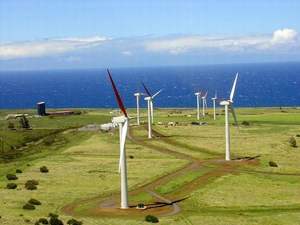
Clean Renewable Energy
Widespread use of clean renewable energy technologies (RET) is vital in securing a sustainable global energy system. Advantages of RET include:
The number of countries where clean renewable energy technologies have seen significant market growth is steadily increasing. However,in most countries of the world, dissemination of new renewable energy technologies is still very limited. A range of barriers – financial, economic, institutional, political and technical – impede implementation. Key barriers include energy markets that are either monopolistic and skewed by subsidies, lack of energy awareness of renewable energy technologies potential and benefits, and a lack of technical and institutional capacity and financing means. So far only a few countries have implemented clean air energy policies promoting renewable energy technologies.
Under the Kyoto Protocol, most public and private renewable energy project development companies can generate and market "certified emission reductions" from energy projects that involve renewable energy technologies that reduce carbon emissions in under developed areas of the world. The Kyoto Protocol provides financial incentives for shifting countries to less emissions-intensive economies. But while the Kyoto Protocol is able to lower some of the key barriers to renewable energy project development, especially in regard to the financial and economic aspects, it is not designed to cancel the obstacles. Adjusting these many conditions will attract more renewable energy technologies.
Addressing the barriers that discriminate against renewable energy technologies in countries usually requires a mixture of well-designed and mutually supportive policies. Probably the leading issue is the economic performance of renewable energy technologies compared to the traditional energy sources that currently dominate the world's energy demand.There are two main approaches to addressing this central problem for developing renewable energy policies and technologies:
1. Bringing down the cost of renewable energy technologies and their related energy services 2. Abolishing market distortions that discriminate against the technologies
Measures to address specific economic barriers include priority setting at project level by host countries, development of a suitable legal frameworks. This is not to say that Industrialised countries and the private sector cannot provide assistance such as building capacity and provding financing. But leading industrialized nations should provide international assistance to attract investment in renewable energy technologies.